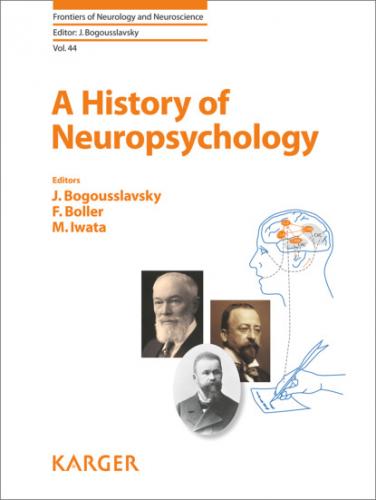Thus, the patient could grasp an acoustic form of the word quite easily but could not understand what it means. His spontaneous tendency to repeat the word suggests he is trying to stabilize the sound image of the word in his mind. Imura insisted this difficulty in grasping word meaning in the face of normal capacity to grasp its sound form is an isolated difficulty because their ability to deal with syntax is intact. Later studies support this claim [8, 10].
Historical Background
When he proposed the concept of Gogi syndrome, he cited semantic aphasia proposed by Head [11], or Namenaphasie by Kleist [12] or mixed transcortical aphasia by Goldstein [13] for discussion but did not identify it with them. Of these, Imura regarded Goldstein’s mixed transcortical aphasia most akin to Gogi aphasia [14]. Although Imura failed to mention, almost identical aphasic symptom complex had been reported by Arnold Pick in 1898 [15]. In this article, Pick introduced Arnaud’s contribution. According to Pick, this Arnaud described a type of transcortical aphasia he termed as “surdite verbale representative.” As the name suggests, this “representative verbal deafness” is characterized by good grasp of spoken word and inability to comprehend its meaning as if it were completely foreign. The patient would correctly repeat an incomprehensible word he just heard. It is not the problem of word sound reception, but the problem of understanding the sound as a symbol of concept. Pick himself described several cases of this type of aphasia. One of them (case F, 67-year-old female) grasped a word sound correctly and repeated the word consciously as if asking its meaning. For instance, she responded to a command to close her eyes, by repeating the word eyes: “What are eyes?” Likewise, to a command to bring a piece of soap, she questioned: “What is soap?”
The existence of Gogi aphasia has been repeatedly confirmed in Japan [8]. Unfortunately, this has not been the case in Europe and America. This may be due to the difference of the mode of spoken language. Indo-European languages belong to a group called reflected language, while Japanese is one of the agglutinated languages in which semanteme (substantive words) and morpheme (grammatical words) are clearly separated [4].
Neuropsychological Interpretation
Imura thought the essential trouble in Gogi aphasia is an impairment of the “dictionary” meaning of words, which is rather fixed and has relatively independent meaning even in a sentence. He asserted that impairment of sentence comprehension even if present is only secondary, compared to the primary impairment of word comprehension [16].
He further argued that word meaning should not be regarded as referent or things meant. In other words, meaning is not an entity. Rather it is a relation between a name and its concept. A name evokes a mental image, while at the same time the evoked image evokes back the name. This “close co-occurrence” of 2 psychological processes is the basis of meaning. In Gogi aphasia, this co-occurrence becomes unstable. This is reflected in the patient’s difficulty not only in comprehending word meaning but also in evoking a sound image of the word [16, 17]. Imura called Gogi aphasia “semantic form of aphasia” [14] or “semantic-form aphasia” [17] contrasting it with “phonetic form of aphasia” such as Broca’s and Wernicke’s aphasia.
As for the fourth feature of Gogi aphasia, Imura’s stance was rather vague. Although he included it as one of the core features of Gogi aphasia, he was prudent to regard the difficulty as an integral part of the syndrome. Thus, in the original paper [1], he admitted that no complete correspondence between symptoms of speech and written language could be confirmed, since every case he had encountered did not necessarily show this pattern of difficulty in written language. But in the subsequent papers, he seemed to have gained confidence to claim that this particular pattern of kanji-kana dissociation is an essential part of the syndrome [14, 16, 17]. Imura also argued that the selective difficulty in kanji handling in Gogi aphasia is caused by its logographic nature, in which a single kanji character stands for multiple sounds and concepts simultaneously [16]. This complexity necessarily burdens a reader with the decision making to choose a correct pronunciation from possible candidates every time he has to read a sentence aloud.
Later studies either included the fourth feature of Imura’s Gogi aphasia as one of the core symptoms [5, 9] or excluded it as coincidental [18, 19].
Responsible Lesions
Imura speculated that responsible lesions for Gogi aphasia are rather diffuse, involving the second and third temporal gyri and adjacent parietal lobe on the left side [16].
One of his cases (the above quoted case E) had been slowly deteriorating, leading Imura to presume a possibility of presenile dementia for its etiology [6]. The autopsy finding described by Pick of the case with “surdite verbale representative” (case F) which had also been slowly progressive showed the presence of diffuse cerebral atrophy, mainly affecting the left temporal lobe [15].
In 1991, Kurachi and Matsubara reported their experience on 11 cases of clinically diagnosed Pick’s disease, of them three had been autopsy confirmed [20]. Of the three, one had been reported as a typical case of Gogi aphasia 7 years earlier [21]. The case showed prominent bilateral atrophy of the middle and inferior temporal gyrus and the fusiform gyrus, but the extent of atrophy was much stronger on the left side.
In the following year, Tanabe et al. [7] reported their experience on 7 cases of Gogi aphasia, of which 6 were diagnosed as suffering from Pick’s disease of temporal lobe type. All the diagnosis was based on the findings of CT or MRI studies, which showed bilateral atrophy of the anterior and middle temporal lobes, the left being more affected. The present author also encountered 2 cases of typical Gogi aphasia caused by temporal lobe degeneration [
